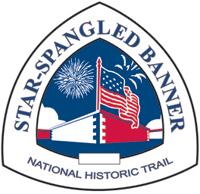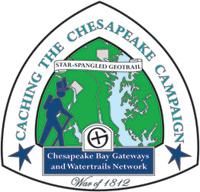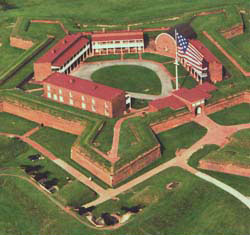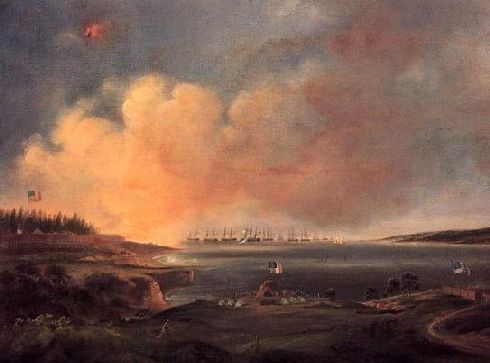During the first challenge along the Star-Spangled Banner GeoTrail, over 400 first edition SSB geocoins were awarded. We would like to thank everyone who participated in the Star-Spangled Banner GeoTour. We are currently out of geocoins but stay tuned for other opportunities along the Star-Spangled Banner GeoTour!


Come on a journey to remember and commemorate the dramatic chain of events, people and places that led to the birth of our National Anthem.
The story of the Star-Spangled Banner was shaped by the events of the Chesapeake Campaign during the War of 1812. From February 1813 until February 1815, the Chesapeake Bay was the center of a fierce struggle between the British and Americans. Places and landscapes still exist today that provide a touchstone to the past. The trail traces events and related sites that figured prominently in the Chesapeake Campaign of the War of 1812 that have national significance, physical integrity, and the potential for contemporary recreation and interpretation.

This cache is located inside the Fort McHenry National Monument and Historic Shrine visitor center. This is a log only cache. Please do not leave any travel bugs or swag. The visitor center is open daily from 8:00 a.m. to 4:45 p.m.. The center is closed on Thanksgiving, Christmas and New Year. Please visit the Fort McHenry National Monument and Historic Shrine website for complete park details.
Fort McHenry was built between 1797 and 1803 following the Revolutionary War to protect the Baltimore city from future enemy attacks. The fort is star-shaped and named after James McHenry, an immigrant who served as Secretary of War under Presidents George Washington and John Adams. Though best known for its role in the Defense of Baltimore during the War of 1812, Fort McHenry also served as a prison for Confederate soldiers and sympathizers during the Civil War, a hospital during World War I, and a U.S. Coast Guard training base during World War II. Fort McHenry was made a national park in 1925 and is the only National Park unit in the United States to have the dual distinction of being named a National Monument and Historic Shrine (August 11, 1939).
In the early morning of September 13, 1814, five British bomb ships and other vessels anchored two miles out from Fort McHenry. In addition to the great guns of the fort, the narrow channel leading to the city was blocked by a chain-mast boom, gunboats and sunken ships. Because of the strength of the American defenses, the British relied on a long-range bombardment which would enable them to shell the fort beyond the range of the American guns. During the attack the British fired over 1,000 shells or “bombs” and 700 rockets. The American defenders, under the command of Major Armistead, had little choice but to endure the punishing bombardment. The bombardment lasted for 25 hours. Due to the great range, little damage was done on either side, but the British ceased their attack on the morning of September 14, 1814. The naval part of the British invasion of Baltimore had been repulsed by the Defenders of Baltimore.

Anchored with the British fleet in the harbor was a truce ship which held Francis Scott Key, a Georgetown lawyer, who had been sent with John Skinner, prisoner exchange agent, to negotiate the release of Dr. William Beanes, a civilian prisoner of war. Though Beanes had been set free they were not released until after the Battle and were forced to witness the battle from behind enemy lines. As the bombardment ended Major Armistead ordered the huge flag, made for the fort by Baltimorean Mary Pickersgill, to be flown. It is this flag that Francis Scott Key saw and penned the poem "The Defence of Fort M’Henry" which would later be renamed "The Star-Spangled Banner" and become The National Anthem of the United States of America.
Visitors to Fort McHenry today will find a visitors center open daily (except major holidays) with exhibits and an introductory film. The fort itself is open to visitors for self guided tours with special events occurring throughout the year. The grounds of the park are a wonderful picnic spot on the Patapsco River. Star-Spangled Banner Weekend is the signature event that commemorates the anniversary of the Battle of Baltimore and is held at Fort McHenry National Monument and Historic Shrine each September. See the website at www.nps.gov/fomc for all details!
(Source: Fort McHenry NMHS website and Terror on the Chesapeake, Christopher T. George, 2000)

Thanks to Trainbug for helping with this hide and the Maryland Geocaching Society for assisting with the project!